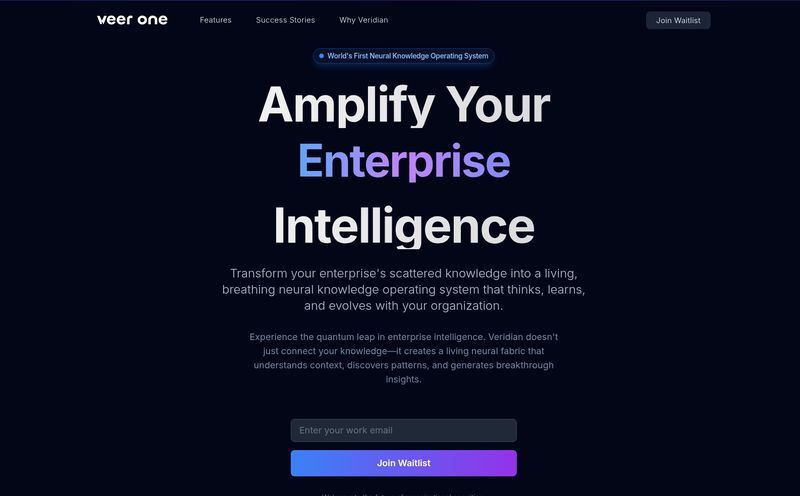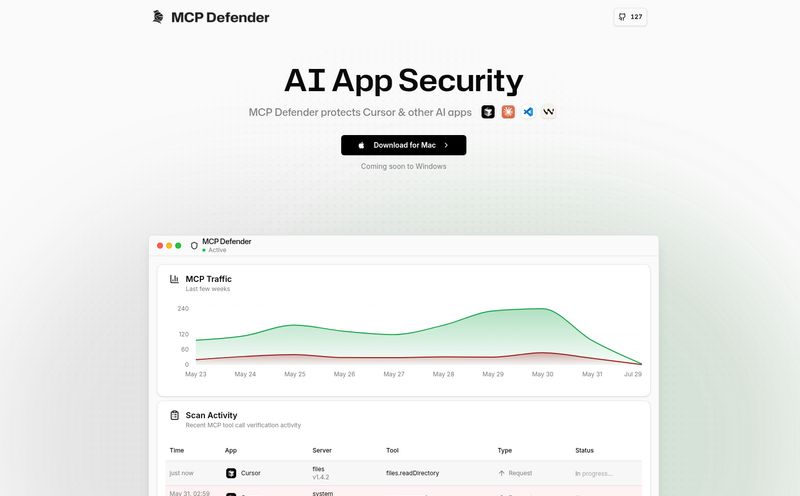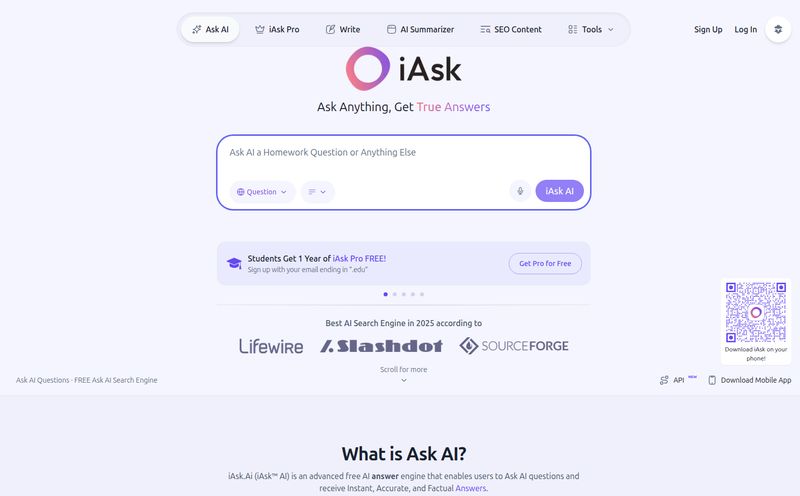I’ve been in the SEO and digital trends game for a long time. Long enough to remember when getting a 3D model of a building meant hiring a small army with expensive laser scanners and waiting weeks for the results. It was a tedious, clunky process that cost a fortune. So when a company like OpalAi comes along, waving the banner of “Spatial Intelligence AI,” my ears perk up. But let's be real, a lot of companies throw around “AI” like confetti at a parade. My job is to see if there's actually a float in that parade or if it’s just… well, confetti.
The buzz around them is hard to ignore, especially with backing from heavy hitters like the National Science Foundation. That’s not your typical venture capital stamp of approval; that’s a signal of some serious, deep technology at play. So, I decided to put on my analyst hat, push past the marketing gloss, and figure out what OpalAi is really bringing to the table for those of us obsessed with data, efficiency and a little bit of futuristic tech.
So, What Exactly is OpalAi? Breaking Down the Hype
At its core, OpalAi isn't just another app that scans a room. That's been done. Think of it more as a complete data pipeline for the physical world. It takes messy, complex real-world information—like a simple video from your phone, a property scan, or even city-wide datasets—and translates it into pristine, structured, and immediately useful digital formats. We're talking accurately measured 3D CAD models, detailed floorplans, and rich Building Information Models (BIM).
It’s like having a master surveyor, a seasoned architect, and a data scientist all shrunk down into a cloud platform. The goal isn't just to create a pretty picture or a “digital twin”; it’s to extract actionable intelligence from that twin. This is the shift from just digitizing spaces to actually understanding them. And in industries like property and insurance, that’s a multimillion-dollar distinction.
Peeking Under the Hood: OpalAi's Key Services
Alright, let's get into the nuts and bolts. A platform is only as good as its features, right? OpalAi segments its offerings into a few key areas, each targeting a pretty specific (and high-value) problem.
ScanTo3D and Scan to BIM: The Cornerstone
This is the bread and butter. The foundation. With their ScanTo3D app, the promise is simple: walk through a property, and let the AI do the heavy lifting. The platform processes the data to generate what they claim are highly accurate 3D CAD models and floorplans. This is a game-changer for architects, engineers, and construction (AEC) professionals who live and breathe in BIM software. The ability to go from a physical site to a workable BIM file in a fraction of the traditional time is, frankly, where the entire industry is heading.
I saw a testimonial on their site that said, "OpalAI's tools are easy to use and produce some of the most accurate results we've seen." Now, I'm always skeptical of homepage praise, but combined with the NSF backing, it suggests their accuracy claims hold water. For PropTech companies, imagine onboarding new properties for virtual tours or management in hours, not weeks. The efficiency gain is obvious.

Visit OpalAi
Astro Adjuster: More Than Just a Scan
Here’s where it gets really interesting for a different sector: InsurTech. Astro Adjuster isn't about creating a perfect model; it’s about rapid damage assessment through video analysis. Think about the aftermath of a flood or fire. An insurance adjuster could use a video feed to document the damage, and the AI could automatically identify, categorize, and even estimate the scope of the destruction. This could slash the time it takes to process a claim, which is a massive win for both the insurer (lower operational costs) and the policyholder (faster payout). It turns a subjective, time-consuming task into a data-driven, semi-automated process.
Urbanomy and FireVison: Thinking Bigger
If ScanTo3D is about a single building, Urbanomy and FireVison are about the entire city, or even a region. Urbanomy is their play for city data analysis, helping urban planners or large commercial real estate firms understand an area at a macro level. But I'm particularly intrigued by FireVison. It's designed to analyze and predict wildfire risk, a painfully relevant topic for many parts of the world. This is where you see the platform's potential for government and public safety applications. They even mention a Fire GPT service is coming soon, which hints at a future where you could conversationally query complex environmental risk data. That’s pretty cool stuff.
Who is This Actually For?
Let's be clear, this is not a tool for a hobbyist looking to remodel their kitchen. OpalAi is aiming squarely at the enterprise and government markets. Their website explicitly calls out several 'Tech' sectors:
- PropTech: Real estate agencies, property management firms, and developers can use it for faster property onboarding, virtual staging, and accurate floorplan generation.
- InsurTech: Insurance companies can use Astro Adjuster for streamlined claims processing and risk assessment.
- Space Tech: While less defined, one could imagine this being used to map complex industrial facilities or even conceptual designs for off-world habitats where accuracy is everything.
- Transport Tech: Think of mapping roads, bridges, and tunnels for maintenance and planning without massive survey crews.
They also offer a White Labeled iOS App, which tells me they're open to B2B partnerships where a large company might want to offer these scanning capabilities under its own brand. It's a smart business model for a platform with such powerful, but niche, technology.
The Good, The Bad, and The... Vague
Okay, no tool is perfect. After digging around, here's my honest assessment. The biggest pro is the sheer legitimacy of the technology. You don’t get a grant from the National Science Foundation for a half-baked idea. This signals a level of peer-reviewed, scientifically-grounded innovation that you just don't see in your average startup. The tech seems robust, the applications are well-defined, and the potential for ROI in their target industries is massive.
But then there's the big question mark: the pricing. It’s nowhere to be found on the site. This is typical for enterprise-grade software, but it's always a bit of a letdown. You have to 'Request a Demo' to get a quote, which means it’s almost certainly not cheap and will be customized based on usage, features, and company size. This approach can be a barrier for smaller companies or teams who just want to know if it's even in their budget ballpark.
Also, seeing things like "Fire GPT (Soon)" is both exciting and a small red flag. It shows they're innovating, which is great. But it also means you might be buying into an ecosystem that's still under construction. Not necessarily a deal-breaker, but something to be aware of.
My Final Verdict: Is OpalAi Worth the Demo Request?
So, here's the bottom line. If you're a small business owner or a solo practitioner, OpalAi is probably overkill. You can find simpler, cheaper floorplan apps that will do the job. But if you are a decision-maker at a large real estate firm, an insurance company, an engineering firm, or a government agency, I think hitting that 'Contact Us' button is a no-brainer.
The technology appears to solve a very real, very expensive problem. It’s about replacing slow, manual, and often inaccurate human processes with fast, data-rich, AI-driven automation. In my experience, any tool that can do that successfully is worth its weight in gold. The lack of public pricing is a hurdle, but the potential upside of transforming your spatial data workflow seems too significant to ignore. I’m genuinely excited to see how this platform grows and refines its offerings. They are definitely one to watch.
Frequently Asked Questions
What is OpalAi?
OpalAi is a Spatial Intelligence platform that uses AI to transform real-world scans, videos, and data into accurate 3D CAD models, BIM files, and actionable analytics. It's designed for commercial and government use in industries like PropTech, InsurTech, and urban planning.
How much does OpalAi cost?
Pricing information for OpalAi is not publicly available. It is an enterprise-level solution, and you need to contact their sales team to request a demo and receive a custom quote based on your organization's needs.
Who should use OpalAi?
The ideal users are large organizations and enterprises within the real estate, insurance, architecture, engineering, construction, and government sectors. It's built for those who need to process spatial data at scale and require a high degree of accuracy and analytics.
What makes OpalAi different from other 3D scanning apps?
OpalAi goes beyond simple 3D scanning. It positions itself as a complete data analysis platform, focusing on generating structured, intelligent models (like BIM) and providing specialized analytical tools like Astro Adjuster for insurance claims and Urbanomy for city-wide analysis, all backed by credible institutions.
Is OpalAi's technology reliable?
While every company's results may vary, OpalAi's technology is backed by the National Science Foundation (NSF) and top universities. This indicates a high level of scientific rigor and reliability behind their AI models and processes.
Can I get a white-labeled version of their app?
Yes, the website mentions they offer a 'White Labeled iOS App', which means businesses can partner with OpalAi to offer the scanning technology under their own brand name.
Conclusion
In a world buzzing with AI solutions, OpalAi seems to have carved out a genuinely valuable niche. They're not just creating digital copies of physical spaces; they're building tools to understand them on a deep, analytical level. For the right kind of company, this isn't just an efficiency tool—it's a competitive advantage. While the enterprise-focus and opaque pricing might not be for everyone, the powerful, science-backed technology makes OpalAi a compelling player in the future of how we interact with and manage the built world around us.



